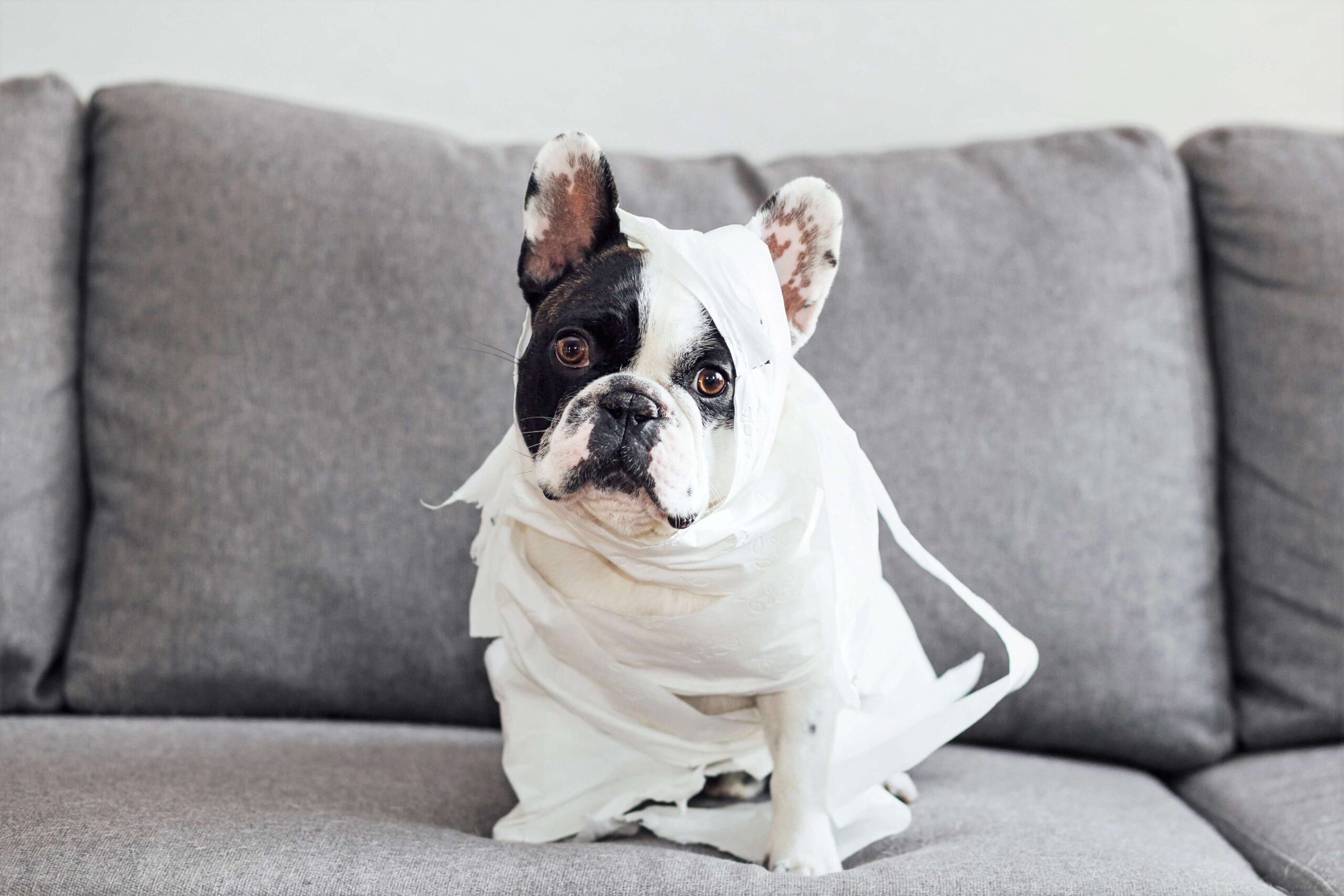How To Potty Train A Puppy: Tips For New Pet Parents

Preventing potty accidents in your home can go a long way in maintaining a healthy environment for you and your pet.
Potty training should be included in the ‘to-do’ list of new pet parents. As much as possible, training should start from day 1 when the newest addition to the home arrives. Adequate preparation can go a long way in ensuring that your new puppy’s potty training journey starts on the right foot, or, paw. As to the questions, “how long does it take to potty train a puppy?”, most puppies can be successfully potty-trained in 4 to 6 months.
Potty training options for puppies
There are several options when potty training a puppy– you can have a potty spot outdoors and train your pup to go to that spot to do his business, or start with a puppy pad or old newspapers and slowly transition the pup to relieve himself outdoors. And then there’s using a crate for house training a puppy.
Picking the paw-fect potty spot
Identifying a potty spot where your pup can relieve himself should be determined beforehand. If you have a yard, choose a spot that a pup-in-training can easily get to from the door. If you’re living in an apartment, identify easy-to-reach grounds that don’t receive as much foot traffic or even vehicles. Once you have identified the potty spot, be consistent in bringing your dog to this area every time he needs to go potty. Dogs instinctively look for their distinct smell that marks their territory, so consistency is important during puppy house training. Once he learns where the potty spot is, he will return to the same spot every time he needs to heed the call of nature.
Signs that your pup needs to go
Your new puppy’s body language can tell you when he needs to go potty. When you spot these signs, be quick to bring him outside to the designated potty spot. These signs include whining, sniffing the floor, smelling his behind, barking or scratching at the door, pacing in circles, or squatting. Since timing is important when taking your pup outside, have a leash right at the door so you can bring him outside ASAP. Following a puppy potty training schedule is important to the overall success of the training regimen.
Being alert for signs that a puppy is about to go will make it possible for you to bring him outdoors to the potty spot so he can relieve himself. Take note that every potty accident can push house training back for several days or more. You’ll also have to deal with some deep cleaning to get rid of residual smells that can attract your pet to do his business on the ‘illegal potty spot’.
Jump-starting your pup’s potty training
Dogs are creatures of habit. Thus, when you start your pup’s training, being consistent can help in the learning process. There are certain hours of the day that you should take your pup out to do his business. These include an early morning visit to the potty spot, after every meal, before bedtime, and anytime you see any signs that your pup needs to go. Encourage bowel movement by bringing your dog outside within 30 minutes after a meal.
Young puppies with their small bladders need to be taken out every hour to eliminate. Over time, you can stretch the time between trips to the potty spot.
House training with a crate
The use of a crate for house training is based on the principle that dogs instinctively eliminate away from where they eat, drink, or sleep. During house training, the size of the crate should be just large enough to allow your pup to stand up, lie down, and turn around. If the crate is too large, your dog may designate a corner for a potty spot. An ideal crate for the purpose is the one that comes with partitions so you can easily adjust the space as your pup grows.

How long should puppies stay inside the crate during potty training?
Puppies that are younger than 6 months old should not be cooped up in a crate for more than 3-4 hours at a time, as their small bladders can easily fill up. Also, they still lack the training to hold it in for too long.
Things to remember when using a crate for house training a puppy
- Don’t use a crate that is big enough for a puppy to allocate one end as a spot to eliminate in. A smaller crate will keep their den instinct in check, that is, to keep their “den” clean and to eliminate far from where they eat and sleep.
- Never keep a puppy inside a crate for longer than the recommended hours or else he will be forced to eliminate in his crate. When this happens, it can sabotage your on-going house training and set it back for weeks! During the puppy’s first few days of house training, he will need to be taken out to the potty area every hour to relieve himself.
- If your pet has a history of eliminating inside his crate, experts don’t recommend using the crate as a house training tool.
- Puppies with medical issues should never be placed in a crate.
Paper Training
Paper training is often a popular choice for house training puppies in many households. It’s a traditional technique, but one that can be trusted to deliver if pet owners will do their part consistently.
How to potty train a puppy on pads
Paper training basically involves placing old newspapers in a specific area in your home and using it as a potty spot for a puppy that is undergoing house training. Nowadays, people are using puppy pads, litter trays, or even sod boxes instead of newspapers, but the technique is still the same. The material easily absorbs and holds poop and urine and makes it easier for pet owners to clean up the mess.
The procedure involves getting a puppy used to eliminating on the ‘legal potty spot’ a.k.a. the paper or pad. At first, you may need to cover a wider area, gradually reducing it while moving the paper to the spot where you want your pet to eliminate permanently.

Things to remember when using paper or pads for puppy house training
- Choose a spot with flooring that’s made of hardwood, tiles, or linoleum. These surfaces are easier to clean up. Also, it won’t absorb urine, stubborn stains, and residual odors. Ideally, the bathroom, laundry room, or kitchen is ideal for this purpose.
- Avoid areas that are covered with carpet because your puppy will prefer the softness of the carpet to the paper when doing his business.
- Before bringing in your pup to the room or area, be sure to set up the newspaper or puppy pads on one end while his bed, food and water bowl, and some toys are placed at a considerable distance. With this arrangement, your puppy has no choice but to eliminate on paper.
- Dirty or wet paper must be disposed of immediately. Dogs instinctively avoid areas where their waste is deposited. One technique that pet owners use to encourage a puppy to keep eliminating in the same spot is to keep a piece of a previously soiled paper and place it on the spot. The puppy will likely smell around for any tell-tale scent before eliminating on the spot where the piece of soiled paper was placed.
- Once your puppy eliminates consistently on the paper, you can gradually move the paper toward the door until such time that he is using the paper on the designated potty spot outside. This will take time, but among the different house training methods, paper training requires the least effort from pet owners.
Positive reinforcement during house training
Positive reinforcement is an important tool in achieving house training success. When a puppy eliminates on the designated potty spot, be quick to reinforce the behavior by rewarding him with some of his favorite treats.







